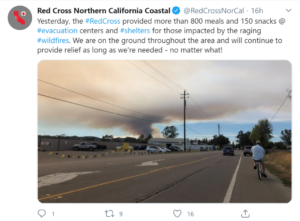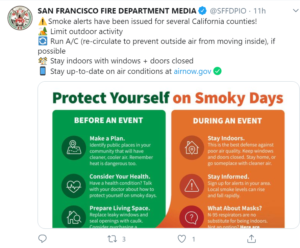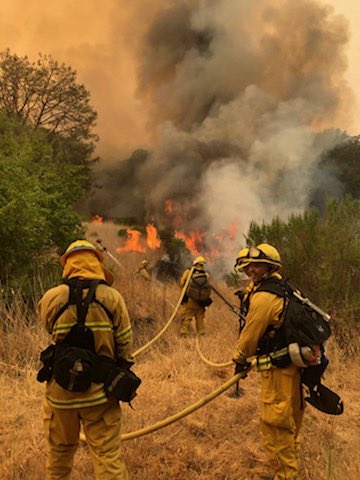SAN FRANCISCO— Severe lightning strikes that began Sunday, August 16, along with a heatwave have sparked wildfires that have affected the entire San Francisco Bay Area. Temperatures have reached up to 130 degrees in Death Valley.

Governor Gavin Newsom said in a press release on Wednesday, August 19, that California has experienced “10,849 lightning strikes in the last 72 hours and world record heat temperatures. We’re currently battling 367 known fires. Grateful for our firefighters, first responders, and everyone on the frontlines protecting Californians during this time.” He also reported that there were 23 major fires/complexes burning and that the LNU and CZU Lightning Complexes were zero percent contained as of Wednesday. The Red Cross has helped with providing meals and shelter to those who lost their homes.
The large number of smaller fires concentrated in one area led officials to put them into groups called complexes. The LNU, CZU, or SCU prefixes that come in front of the lightning complex moniker used to describe the fires act as location markers. LNU is the northeast Bay Area, CZU the western/southern Bay Area, and SCU the eastern/southeastern Bay Area.

The California Department of Public Health urges residents to stay indoors and run the A/C if possible to escape the poor air quality outside caused by the wildfires. Other tips to deal with the heatwave and conserve electricity include setting A/C to 78 degrees from 2-9 p.m., using microwave, stove, outdoor grill instead of oven, keep opening the fridge to a minimum, and avoiding using appliances at peak hours. To ready your home for wildfires, you could remove branches over the roof or dead plants/weeds within 30 feet of your home. For more suggestions on dealing with the heatwave and fires, you can visit the San Francisco Fire Department page on Twitter.





